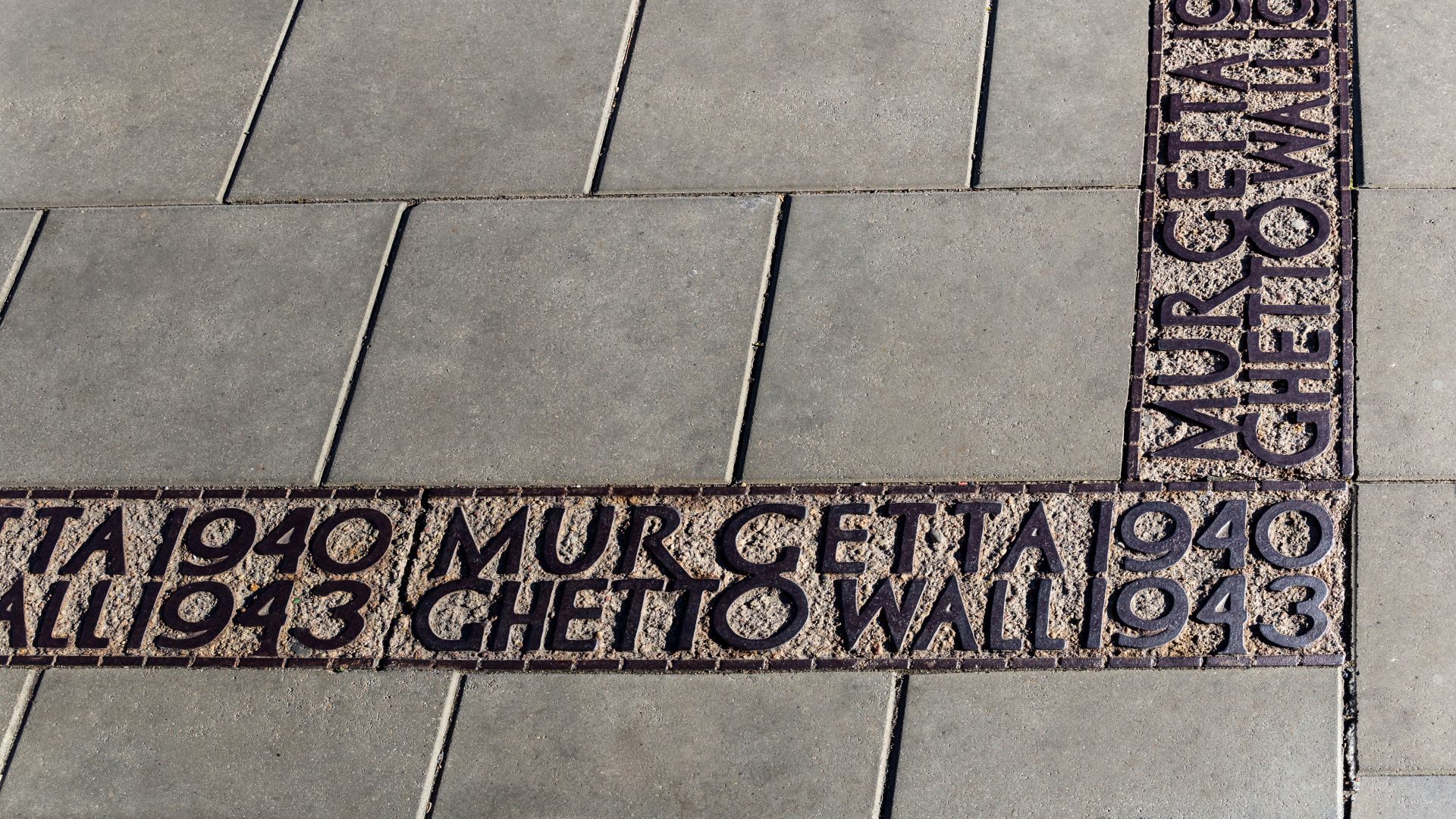Jewish monuments in Warsaw
🕗 2 minutes | July 30, 2025 | Text by Kamil Wrzosek
Before the outbreak of World War II, the city of Warsaw was one of the largest and most important centers of Jewish culture in Europe. Over 350,000 Jews lived here. Today, we still find synagogues, cemeteries, and buildings that bear witness to the history and culture of Warsaw Jews.

Abstract
We invite you on a journey through the Jewish heritage of Warsaw, which was home to a large Jewish community before World War II.
In this article, we'll take you to the POLIN Museum of the History of Polish Jews, the Monument to the Ghetto Heroes, and the Warsaw Ghetto Walls. You'll also discover the only surviving Nożyk Synagogue, the Jewish Cemetery on Okopowa Street, and the Monument to the Evacuation of the Warsaw Ghetto Fighters, commemorating their courage.
Monuments related to Jewish culture
Remnants of Warsaw's Jewish community can be found throughout the city today. If you're curious, we invite you to join us on a walking tour of Warsaw's most important Judaica sites.
POLIN Museum of the History of Polish Jews
Our first stop on our tour of Jewish monuments is the POLIN Museum of the History of Polish Jews. Located at 6 Anielewicza Street in Warsaw's Muranów district, it was established to restore the memory of the rich history of Polish Jews to the residents.
Check flight prices to Warsaw
The POLIN Museum of the History of Polish Jews captivates with its glass façade and austere interior. The main hall's shape evokes a ravine, symbolizing the Jews' crossing of the Red Sea into the Promised Land.
The museum is divided into permanent and temporary exhibitions and an interactive section with a cinema and workshop spaces. Inside, there is also a reconstruction of the vault of a replica of a 17th-century synagogue.

Monument to the Ghetto Heroes
Right next to the POLIN Museum of the History of Polish Jews stands the Monument to the Ghetto Heroes, erected on the site of the greatest battles against the German occupiers. It was erected to commemorate all those who fought and died in the Warsaw Ghetto Uprising. The western side of the monument features a bas-relief entitled "Fight."
The monument was unveiled on April 19, 1948. Two decades later, the German Chancellor made a symbolic gesture there, laying flowers in apology for the crimes committed by the Third Reich. The event was commemorated by naming the square after Willy Brandt and raising a monument of the same name.
Walls of the Warsaw Ghetto
When in the former Jewish quarter, look down at your feet and the walls of the buildings. You'll find the symbolic borders of the ghetto, remnants of the preserved wall, and 22 commemorative plaques. Also note the Umschlagplatz monument on Stawki Street, which resembles a wagon. It was from there that over 300,000 Jewish residents of Warsaw were deported to extermination camps.

The Nożyk Synagogue and the Jewish Cemetery on Okopowa Street
Remnants of the Holocaust during World War II are also found on Próżna Street. It was primarily inhabited by the Jewish elite, who founded the Nożyk Synagogue on Twarda Street in the late 19th century. Today, it is the only surviving pre-war Jewish house of prayer.
In Warsaw, the Jewish Cemetery on Okopowa Street in the Wola district is also worth visiting, as it is home to over 250,000 people. Today, there are 150,000 gravestones, the oldest of which dates back to 1809.

Memorial to the Evacuation of Warsaw Ghetto Fighters
During the Warsaw Ghetto Uprising, fighters evacuated through the sewers. To commemorate this event, the Monument to the Evacuation of the Warsaw Ghetto Fighters was erected at 51 Prosta Street.
It commemorates a group of fighters who entered the sewer on Franciszkańska Street and were unable to find their way out. A friend of theirs organized the rescue expedition, which ended at the exit of the manhole on Prosta Street. Today, the Monument to the Evacuation of the Warsaw Ghetto Fighters can be found there.
Book a tour in Warsaw on GetYourGuide
Summary
Śródmieście, Muranów, and Wola are the districts where you'll find the most remnants of Warsaw's Jewish history. These are also important memorials worth devoting a little more time to. Interested? Book flights to Warsaw and take a walk in the footsteps of the Jewish people.
